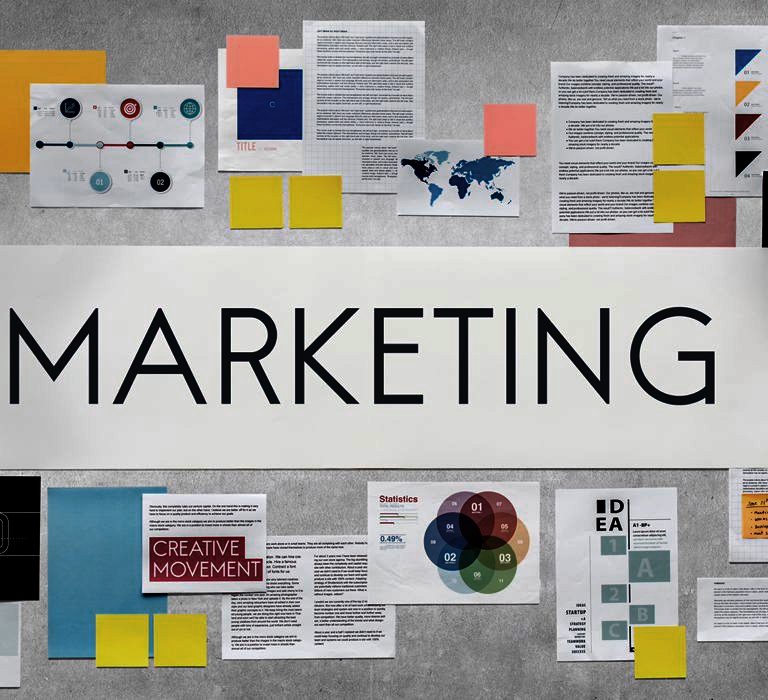HOW TO RUN GOOGLE ADVERTS; BEGINNERS BLUEPRINT
Google Adverts is an incredibly powerful marketing tool, but it can be intimidating if you’ve never used it before. With its ever-changing landscape, new features, and options, it can feel overwhelming for a beginner.
But don’t worry, it doesn’t have to be that way! In this article, I’m going to walk you through the basics of running Google Adverts for beginners. We’ll cover everything from setting up your account to creating your ad campaign and even some best practices for optimizing your ads.
By the end of this article, you’ll have a better understanding of how Google Ads works and how to make the most of your ad budget. So let’s get started!
What Is Google Adverts?

Google Ads is a powerful marketing platform that can help you reach more customers. With Google Adverts, you can create and run ads that appear on Google’s search engine result pages, as well as in other places across the web. In addition to promoting your business’s website, your ads can also appear on YouTube and other video networks, apps and websites across the web.
Google Ads makes it easy to build campaigns that target different audiences and goals. You can set budget limits and define keywords to trigger your ads so they reach the people who are likely to be interested in what you’re offering. Plus, with advanced measurement tools, you can track how successful your campaigns are and quickly adjust them for better performance if needed.
Setting Up Your Account and Campaigns
Getting started with Google Ads is easy. All you need to do is create an account, and then you can begin building your ad campaigns. Here’s a quick overview of what you’ll need to do:
- Create a Google Ads account: Before you can start running ads, you’ll need to sign up for a Google Ads account and provide your payment information.
- Set your budget: You want to make sure that your budget allows for the kind of ads that are going to be effective and reach the right people. Setting your budget correctly is an important step before launching any campaigns.
- Choose the right goal: Do you want to drive more sales? Increase brand exposure? In order to effectively measure success, make sure that you select the right goal for your campaign.
- Create well-targeted campaigns: To get the most out of Google Ads, it’s important to create well-targeted campaigns that speak directly to potential customers by focusing on keywords they might be searching for or even custom groups of customers who have interacted with your website in the past.
By following these steps, you can get started with running your own successful Google Ads campaigns.
Crafting Your Customer Avatar
A customer avatar is also referred to as a buyer persona. A buyer persona simply refers to the target audience you want your ads to show to. It is important to understand the demographics, interests, and online behavior of your existing customers to identify patterns and trends.
This would allow you to craft a well-detailed buyer persona for your ad. Putting into consideration their interests, demographics, pain points, motivation, challenges, and solutions.
Creating Effective Ad Copies and Visuals
Creating effective ad copies and visuals for your Google Ads campaigns is key to engaging potential customers. After all, you want it to be eye-catching and memorable so people click through.
So what makes an effective Google ad? Read on to find out
Writing ad copies
When writing an ad copy, remember to include a clear call to action (CTA) such as “Sign Up Now” or “Learn More” so people know exactly what you want them to do. Keep your messaging simple and direct, and use words that are easy to understand. Also, make sure your copy is relevant and targets specific keywords that you’re going for.
Creating visuals
The visuals of your Google Ads should be clear and easy on the eyes. You should also choose visuals that are relevant pictures of products or pieces of content you’re trying to promote. Be sure not to include too much text in your visuals as they tend to look cluttered. Finally, make sure the size of the visual matches the size parameters required by Google Ads.
Creating an effective ad copy and visuals may seem like a daunting task at first, but once you get the hang of it, it’s not as challenging as it seems! With a little bit of practice, you’ll be able to create stunning Google ads that will surely help generate more leads for your business.
Selecting Keywords for Targeting
Now it’s time to think about the keywords that you’ll use to target your ads. Choosing meaningful keywords can help ensure your ads are seen and clicked by the right people.
To get started, think about words or phrases that your target audience may use when searching for services or products related to your business. You can also use Google’s Keyword Planner tool to help you come up with keyword ideas. It’s free, and you don’t have to create an ad in order to use it.
Here are some tips on how to choose the best keywords for your campaign:
Choose words that are specific and relevant. Focusing on long-tail keyword phrases with three or more words can help you get more targeted traffic.
Brainstorm a list of related terms or synonyms, so you can target all angles of a topic.
For example, if you’re running ads for “sportswear,” also consider targeting “fitness apparel” and “athletic wear.”
Consider using negative keywords such as “free” or “cheap” so that your ads won’t show up when someone is looking for those types of products or services.
By selecting appropriate broad and exact match keywords, you’ll be able to attract the right customers who have an interest in what your business is offering.
Understanding Bidding and Budgeting
Now that you are familiar with the structure of Google Ads, it’s time to think about bidding and budgeting. Bidding is simply how much you will pay for a click or an impression. Different keywords have different bids and prices, so you should set your bids with care. Google Ads also has automated bidding strategies that use machine learning to optimize your bids for performance.
Budgeting is simply how much you are willing to spend on an ad campaign each day. You can set a daily budget for each campaign or ad group, but remember that it won’t be exact. Google will spend slightly more or less than the amount you’ve specified. Setting a budget cap help to prevent overspending, so you can stick to a regular budget without worrying about going over in case of unexpected spikes in clicks or impressions.
As a beginner, an average of 10 dollars daily is good to start an ad. Check your account daily to see how your ad has performed.
Optimizing Campaigns for Better Results
Once your campaigns are up and running, you need to make sure that you are regularly optimizing them for better performance. This is an ongoing process, so don’t worry if you don’t get it perfect from the start.
Analyze & Refine:
Keep a close eye on your campaigns and analyze the performance data regularly. Look for areas where your ads are underperforming or where there is room for improvement and take action accordingly. This can range from changing up ad copy or trying different keywords to switching up targeting settings and much more.
A/B Testing:
A/B testing allows you to create two versions of an ad with slight variations in order to see which one performs better. For example, you might want to test two different titles or descriptions of your ad with the same image or video to see which variation has higher click-through rates (CTR). You can also experiment with different bidding strategies to see what works best for your goals and budget.
By taking the time to analyze and refine your campaigns, you can optimize them for better performance and results over time. Keep track of your progress and make sure that you are consistently testing out new ideas so that you can continually improve your campaigns in the future.
Conclusion
With the right approach, Google Adverts can be a powerful tool for bringing in new leads and traffic to your website. Running a successful campaign takes careful planning, optimizing strategies, and testing, so be sure to dive into your analytics to make sure your campaigns are delivering the desired results.
Running Google Ads can be complicated, but it doesn’t have to be. Just remember to start small, test different strategies, monitor your analytics, and adjust as needed, and you’ll be on your way to mastering the art of running successful Google Ads campaigns. So what are you waiting for? Get out there and start running some ads!








